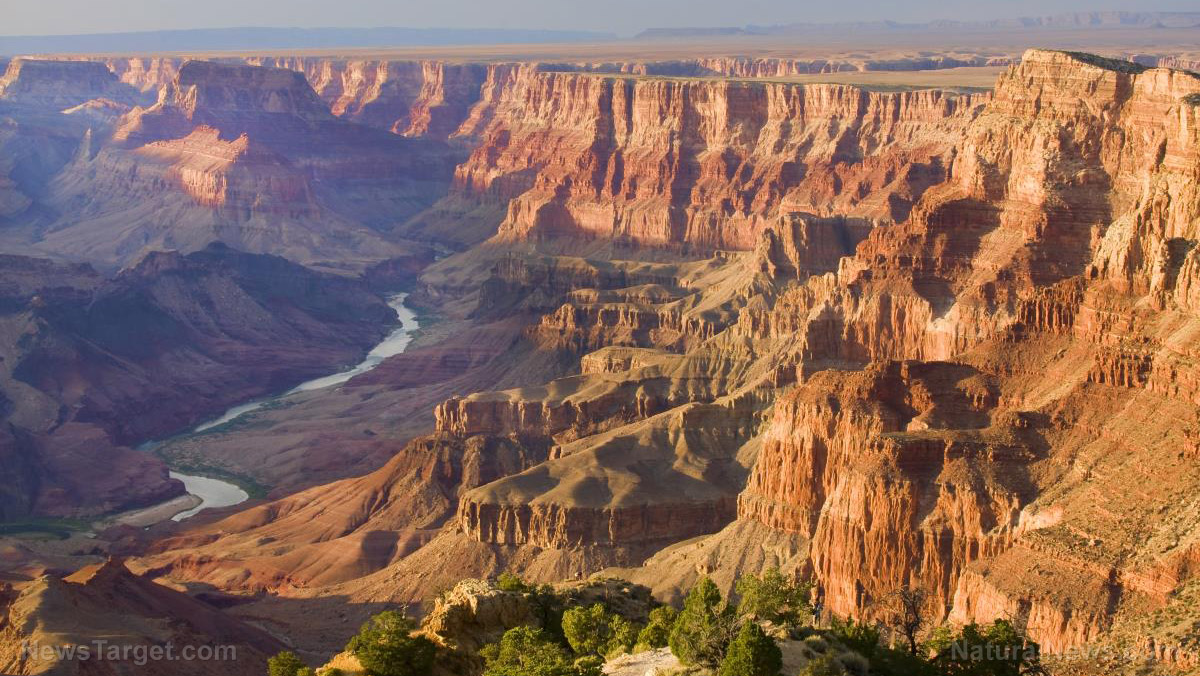Grand Canyon’s historic lodge consumed by fire amid toxic gas crisis and evacuations – NaturalNews.com

Grand Canyon’s historic lodge consumed by fire amid toxic gas crisis and evacuations
A wildfire ignited by lightning on July 4 has raged across the Grand Canyon’s North Rim, erasing the historic Grand Canyon Lodge and triggering an industrial chlorine gas leak, marking one of the most destructive natural disasters in the park’s 106-year history. By Monday, July 14, the Dragon Bravo Fire had torched over 5,000 acres of forest, while the adjacent White Sage Fire scorched 50,000 acres in Kaibab National Forest. The flames, driven by 40 mph winds, claimed the iconic lodge — a symbol of Arizona’s wilderness for over 80 years — and forced the permanent closure of the North Rim for the 2025 tourist season.
The lodge, a rustic log-and-limestone landmark welcoming hundreds of daily visitors, was the only lodging on the North Rim. Designed after a devastating 1932 kitchen fire, its reconstruction in 1937 fused new architecture with salvaged stone from the original site. “This isn’t just a lodge,” lamented Sen. Ruben Gallego (D-AZ), in a social media post. “Arizona lost a piece of its soul. The Brighty the Burro statue, the archives, the memories… this is more than a building. It’s our heritage.”
Chlorine gas halts firefighting effortsEfforts to contain the fire were dealt a critical blow on July 12 when a water treatment facility in the fire’s path exploded, releasing a plume of chlorine gas. The gas leak forced firefighters to retreat from containment zones, hampering aerial drops of fire retardant.
No injuries were reported, but the incident underscored the fire’s volatile behavior. “We’re dealing with a nightmare scenario — flames accelerating at night, the wind defeating our lines, and now a toxic hazard we didn’t plan for,” said NPS Fire Management Incident Commander Ed Keable, citing the need to evacuate crews near the chemical leak.
The gas’s density, which settles in low-lying areas like the canyon floor, also threatens hikers and has prompted the indefinite closure of Phantom Ranch, a renowned riverfront lodging enclave. “Conditions are lethal downstream,” warned officials.
A chain reaction: Wildfires in the West and smoke’s reachArizona’s fires are part of a region-wide crisis. Meanwhile, Canadian wildfires have sent smoke as far as the Upper Midwest, darkening skies and triggering “very unhealthy” air quality advisories from Minnesota to North Dakota. In one poignant twist, even as Arizonans mourn tourism dollars lost to Nevada’s canyon flights, the state now sees its own visitors chased away — this time by flames, not rivalry.
The Dragon Bravo blaze’s origins revert to a lightning strike on Independence Day — a reminder of nature’s power prowess. But officials are under scrutiny over firefighting tactics. Gov. Katie Hobbs emphasized a “comprehensive investigation into why this fire escalated so rapidly,” hinting at tensions over initial containment efforts.
A season’s loss and a call for accountabilityThe NPS has declared the North Rim closed through 2025. Park staff evacuated safely, but the human costs linger in lost landmarks, canceled trips and smoky skies blotting out the sun. “We’re creating the fire equivalent of an ice age,” warned journalist Mike Adams in referencing the “Pyrocene” era of human-accelerated blazes — a phrase echoing worries over climate-driven fire behavior.
As crews battle 110-degree heat and persisting winds, victims and residents alike grieve. Aramark’s granite records, artifacts and the beloved 600-pound “Brighty the Burro” bronze statue — now reduced to ash — are mourned as irreplaceable.
Can the Canyon recover its luster?The Grand Canyon remains open to visitors on the South Rim, yet its spirit is indelibly marred by this disaster. Construction of a new North Rim lodge, hinted at by state leaders, may assuage some, but locals argue replication cannot recapture history.
As the smoke clears, the question lingers: How much more can a fragile landscape endure before losing its soul entirely?
Sources for this article include: